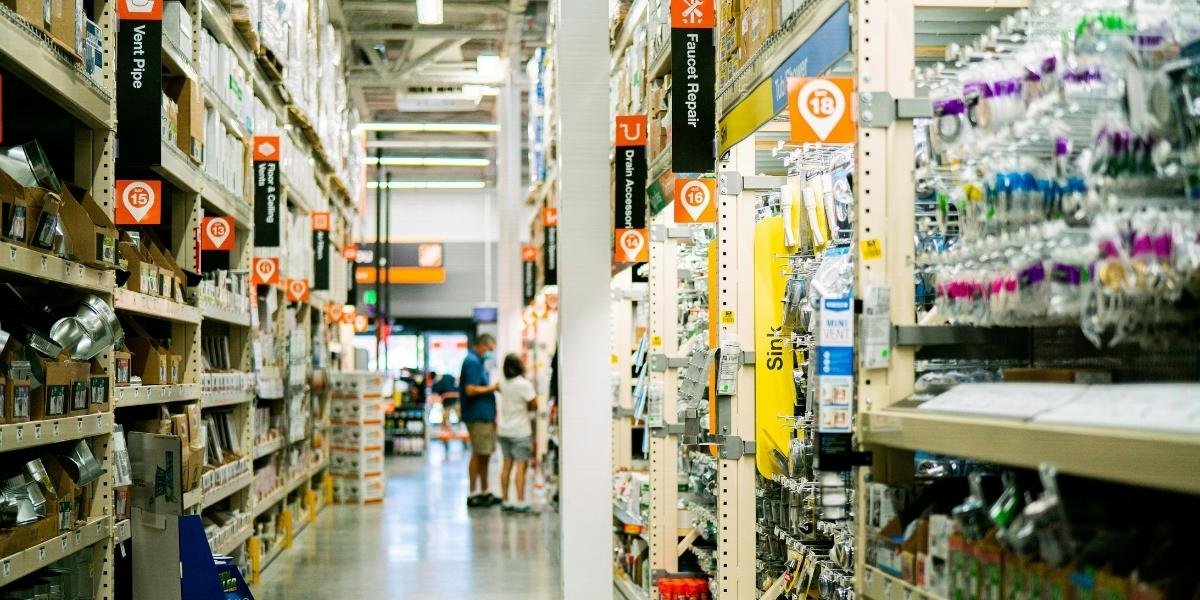The retail sector is grappling with a set of economic challenges that are pressuring profits and weighing heavily on earnings reports. Amid rising tariffs, ongoing inflation, and shifts in consumer behavior, major players like Home Depot and Lowe’s are struggling to maintain the growth levels investors expect. While companies in this sector continue to innovate and adapt, the strain on profit margins is undeniable, with broader implications for the future of retail stocks.
Tariff Impacts on Retailers: Rising Costs and Squeezed Margins
Tariffs imposed in recent years, particularly those affecting imports from China, have forced many retailers to adjust their pricing strategies and supply chain structures. Home Depot, Lowe’s, and other large chains have been particularly impacted by these increased costs, which they’ve struggled to pass on to consumers without losing market share. These tariffs raise the cost of goods, particularly in the home improvement and consumer goods sectors, where products are often sourced from overseas manufacturers.
For Home Depot and Lowe’s, these rising costs have translated into lower-than-expected earnings in recent quarters. While both companies reported strong sales growth in certain categories, such as home improvement products and appliances, the gains were offset by the pressure on margins due to higher input costs. As inflation continues to drive up the price of materials and goods, retailers will need to find ways to absorb these costs or pass them on to consumers in a competitive retail landscape.
Inflation’s Persistent Pressure on Consumer Spending
In addition to tariffs, inflation remains a persistent issue that is affecting the retail sector. Consumer prices have been rising steadily, putting a strain on household budgets and reducing discretionary spending. For retailers, this means slower growth in key categories, especially as consumers become more price-conscious and shift their spending patterns.
Home Depot and Lowe’s, which traditionally see strong demand during periods of economic expansion, are facing slowing growth as inflation continues to curb consumer purchasing power. Even with robust product offerings and promotions, both companies are finding it more difficult to capture the attention of cost-conscious consumers. As the inflationary environment continues, retailers must adapt by offering more value-driven options and improving operational efficiencies to sustain margins.
Home Depot and Lowe’s: Earnings Fall Short of Expectations
Home Depot’s most recent earnings report showed growth, but the numbers fell short of analysts’ expectations, triggering concern among investors. The company’s operating income increased by 6.5%, but profit margins were squeezed due to higher input costs. The home improvement giant also reported softer-than-expected demand in some of its key product lines, including building materials and décor, which led to a slowdown in sales volume.
Similarly, Lowe’s has faced similar pressures. The company anticipates more significant challenges in the coming quarters, citing inflation and supply chain disruptions as the primary drivers. Both companies are relying on their large-scale operations and technological innovations to mitigate these challenges, but the uncertain macroeconomic environment remains a major hurdle.
As consumers pull back on discretionary spending, retailers like Home Depot and Lowe’s may continue to face difficulty meeting earnings expectations. For investors, the outlook for retail stocks remains mixed as these companies work to adjust to changing economic conditions.
The Broader Retail Sector’s Outlook: Strategy Adjustments and M&A Activity

Photo Credit: Unsplash.com
Looking beyond the struggles of Home Depot and Lowe’s, the broader retail sector is seeing a mix of strategies to address the current market environment. Many retailers are doubling down on e-commerce, digital transformation, and omnichannel sales strategies to diversify revenue streams. Companies that were once reliant on brick-and-mortar stores are now seeing significant growth through online channels, but they are still dealing with higher shipping costs and logistical challenges.
In addition to expanding digital platforms, some companies are exploring mergers and acquisitions (M&A) to gain market share and strengthen their competitive positions. Consolidation in the retail sector could help businesses gain efficiencies, reduce costs, and improve access to new markets. With retail giants under pressure, it’s expected that M&A activity in this space could pick up as companies look for ways to stay competitive.
Inflation and Tariffs: Long-Term Threats to Retail Profitability
The combination of inflation and tariffs presents a long-term challenge for retail profitability. As wages rise and the cost of goods remains elevated, consumers will continue to face tighter budgets, reducing the volume of discretionary spending. Retailers must find ways to increase efficiency while improving product offerings and maintaining customer loyalty.
In the near term, retailers are working to offset higher costs by shifting supply chains, renegotiating supplier contracts, and cutting operational inefficiencies. However, if inflation continues to remain stubbornly high and tariffs remain in place, these efforts may only provide limited relief. Investors will need to keep a close eye on retail earnings reports in the coming quarters to determine how well companies are navigating these pressures.
What Retail Investors Should Watch Going Forward
For investors in the retail sector, it’s critical to keep track of key economic indicators that could influence future earnings. Inflationary pressures and tariff updates will continue to be the main focus for retail stocks, with major retailers expected to report mixed results as they balance higher costs with consumer demand.
As we approach the second half of the year, investors will also want to monitor the impact of any changes in fiscal policy, including potential Federal Reserve rate hikes or adjustments to tariff schedules. With earnings season in full swing, the market will likely see increased volatility in retail stocks as companies adjust to shifting economic conditions.












